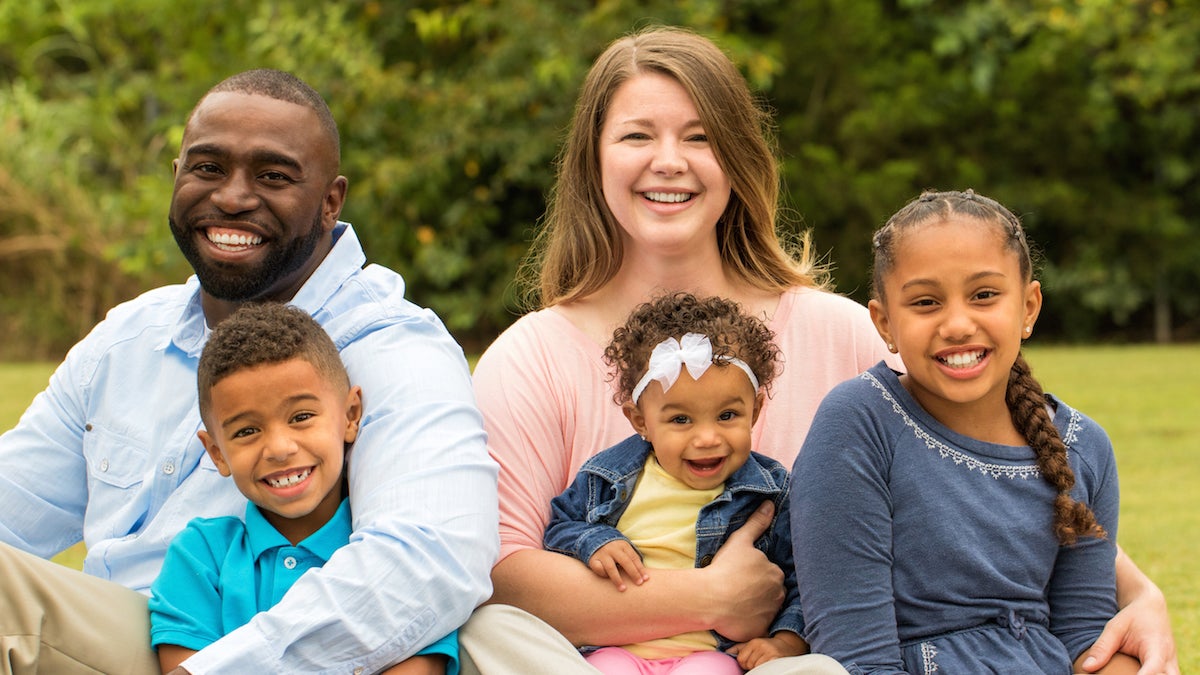My world: Same family, different colors
 Family in park photo via ShutterStock) " title="shutterstock_312488501" width="1" height="1"/>
Family in park photo via ShutterStock) " title="shutterstock_312488501" width="1" height="1"/>
(Family in park photo via ShutterStock)
Do you ever think your family is the strangest one on the block? Or that your all-American family doesn’t quite look like the ones smiling on your TV screen?
I do, because my family is an interracial, bilingual, multicultural mash-up of cultures and complexions. I am black American, my husband is from Spain and our three children are mixed, biracial, or “blannish,” depending on the day of the week.
Thanks to the wonders of DNA and genetic hi-jinx, my three children all came out with different skin tones and different hair textures. Nobody looks alike in our little nuclear family. Nobody matches. And as far as families go, people expect families to match. When they don’t, bad things can happen.
In 2013, a white man shopping with his three biracial daughters at a Virginia Wal-Mart was followed home by police because a concerned citizen thought he might have kidnapped the girls since they had dark skin and he did not. They didn’t “match up,” the concerned citizen reportedly told a Wal-Mart employee.
Stories like this sadly occur far too frequently but don’t always make the news. And when they do garner attention, it’s just an ugly reminder that as a society we haven’t progressed far beyond a time when creepy words like amalgamation and miscegenation were used to describe the love between two people of different races.
It’s not only mixed-race families like mine who experience the stares, the questions and unsolicited opinions. Families formed by adoption, blended families and even same-race families with varying shades of skin color are far too often scrutinized by people who believe family members should all be the same color.
So, how do we get past this? Short of staging a multiracial love-in, how do we expand the notion of what families should look like? How do we retrain society to accept that family members don’t have to match? There are two areas where work is needed — the public space and the private sphere.
As a writer, my protest is always on the page. I’m working on a new book called “Same Family, Different Colors” that explores what life is like for nuclear families where family members are different colors. I’m writing it to educate the general public about the reality of skin color politics in America.
But in my own home, as a mother to my own rainbow coalition, I am a full-time advocate and activist for the inherent beauty in all variations of brown skin and curly hair. I have to be extremely mindful that in praising one child’s darker skin, I don’t denigrate the other’s paleness. When I celebrate one child’s loosely-curled locks, I can’t make it sound superior to another’s tight kinks.
Outside the home my children invariably will receive messages that tell them which skin shade is better, what hair texture more desirable. An onslaught of media will show them that regular families don’t look like ours. History books will erase any mention of families formed across the color line. But I will continue to write, to teach and to love my diverse little family.
If everybody joined me on this journey, then surely the next generation would easily understand that members of the same family could be different colors.
And that would be progress indeed.
WHYY is your source for fact-based, in-depth journalism and information. As a nonprofit organization, we rely on financial support from readers like you. Please give today.

